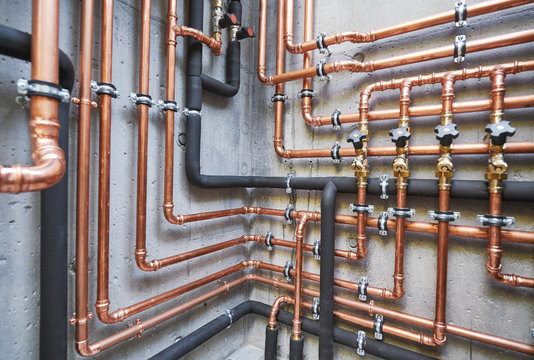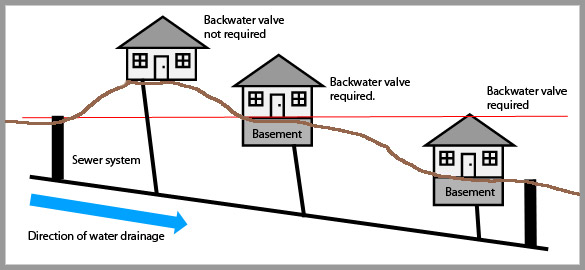Exploring Your Home's Plumbing System Anatomy
Exploring Your Home's Plumbing System Anatomy
Blog Article
Any individual has got their private theory on the subject of Understanding Your Home's Plumbing Anatomy.

Recognizing exactly how your home's plumbing system functions is crucial for every single home owner. From providing clean water for drinking, cooking, and showering to securely eliminating wastewater, a well-maintained pipes system is important for your family members's wellness and comfort. In this detailed overview, we'll discover the complex network that composes your home's pipes and offer suggestions on maintenance, upgrades, and managing usual concerns.
Intro
Your home's plumbing system is more than just a network of pipes; it's a complex system that ensures you have access to tidy water and effective wastewater removal. Understanding its elements and just how they work together can aid you stop expensive repair services and guarantee everything runs efficiently.
Basic Elements of a Plumbing System
Pipelines and Tubing
At the heart of your plumbing system are the pipelines and tubing that bring water throughout your home. These can be made of various products such as copper, PVC, or PEX, each with its advantages in terms of resilience and cost-effectiveness.
Fixtures: Sinks, Toilets, Showers, and so on.
Components like sinks, toilets, showers, and bath tubs are where water is made use of in your house. Understanding just how these components link to the pipes system helps in identifying issues and intending upgrades.
Valves and Shut-off Points
Shutoffs control the flow of water in your plumbing system. Shut-off valves are important during emergencies or when you need to make fixings, permitting you to separate parts of the system without interfering with water circulation to the entire house.
Supply Of Water System
Key Water Line
The main water line connects your home to the local water or a private well. It's where water enters your home and is distributed to different fixtures.
Water Meter and Stress Regulatory Authority
The water meter steps your water usage, while a stress regulatory authority makes sure that water flows at a safe stress throughout your home's pipes system, avoiding damage to pipes and fixtures.
Cold Water vs. Warm water Lines
Recognizing the distinction in between cold water lines, which supply water directly from the major, and hot water lines, which lug heated water from the water heater, helps in repairing and preparing for upgrades.
Drainage System
Drain Pipes Piping and Traps
Drain pipelines bring wastewater away from sinks, showers, and commodes to the sewer or septic system. Traps prevent sewage system gases from entering your home and also trap debris that could trigger clogs.
Ventilation Pipes
Air flow pipes permit air into the water drainage system, avoiding suction that might slow drainage and trigger catches to vacant. Proper ventilation is essential for keeping the honesty of your pipes system.
Importance of Correct Drainage
Guaranteeing appropriate drain stops back-ups and water damage. Regularly cleaning drains and maintaining traps can protect against expensive repair work and prolong the life of your pipes system.
Water Heater
Sorts Of Hot Water Heater
Hot water heater can be tankless or conventional tank-style. Tankless heating systems heat water on demand, while storage tanks save heated water for prompt usage.
Upgrading Your Pipes System
Reasons for Upgrading
Updating to water-efficient fixtures or changing old pipes can enhance water quality, reduce water costs, and boost the worth of your home.
Modern Pipes Technologies and Their Benefits
Check out technologies like clever leak detectors, water-saving toilets, and energy-efficient water heaters that can conserve cash and reduce ecological influence.
Cost Factors To Consider and ROI
Compute the upfront costs versus long-term financial savings when thinking about pipes upgrades. Lots of upgrades spend for themselves with lowered utility bills and less repair services.
Just How Water Heaters Connect to the Pipes System
Understanding exactly how water heaters link to both the cold water supply and hot water distribution lines assists in identifying concerns like insufficient hot water or leaks.
Maintenance Tips for Water Heaters
Frequently flushing your water heater to eliminate sediment, examining the temperature level settings, and examining for leakages can expand its lifespan and improve power performance.
Usual Pipes Problems
Leaks and Their Causes
Leakages can occur as a result of maturing pipelines, loose fittings, or high water stress. Resolving leakages without delay protects against water damages and mold growth.
Obstructions and Clogs
Blockages in drains and bathrooms are frequently caused by purging non-flushable things or an accumulation of grease and hair. Making use of drainpipe displays and being mindful of what goes down your drains pipes can stop blockages.
Signs of Pipes Problems to Expect
Low water pressure, slow-moving drains, foul odors, or unusually high water costs are indications of prospective plumbing troubles that need to be resolved without delay.
Plumbing Maintenance Tips
Normal Examinations and Checks
Arrange annual pipes evaluations to capture problems early. Try to find indications of leakages, rust, or mineral accumulation in faucets and showerheads.
DIY Maintenance Tasks
Basic jobs like cleansing faucet aerators, looking for bathroom leakages using color tablets, or shielding exposed pipelines in cold environments can protect against major pipes issues.
When to Call a Specialist Plumbing Technician
Know when a pipes problem calls for expert knowledge. Trying intricate repairs without appropriate expertise can result in even more damage and higher fixing costs.
Tips for Reducing Water Usage
Simple routines like repairing leakages quickly, taking much shorter showers, and running full tons of laundry and dishes can conserve water and reduced your energy expenses.
Eco-Friendly Pipes Options
Consider lasting pipes materials like bamboo for flooring, which is durable and environment-friendly, or recycled glass for countertops.
Emergency situation Preparedness
Actions to Take During a Pipes Emergency situation
Know where your shut-off valves lie and just how to turn off the supply of water in case of a ruptured pipeline or significant leakage.
Relevance of Having Emergency Contacts Useful
Maintain call details for neighborhood plumbers or emergency situation services easily offered for quick action throughout a plumbing situation.
Environmental Impact and Conservation
Water-Saving Fixtures and Appliances
Setting up low-flow faucets, showerheads, and bathrooms can dramatically lower water use without giving up efficiency.
Do It Yourself Emergency Situation Fixes (When Suitable).
Short-term fixes like utilizing air duct tape to patch a leaking pipe or placing a container under a leaking tap can minimize damage till a specialist plumbing technician arrives.
Final thought.
Understanding the anatomy of your home's plumbing system empowers you to maintain it effectively, saving time and money on repair work. By following regular upkeep regimens and staying informed about modern-day pipes innovations, you can guarantee your pipes system operates effectively for years to come.
The Anatomy of Your Home s Plumbing System
Understanding the anatomy of your home s plumbing system is essential for any homeowner. It not only helps in identifying potential issues but also facilitates effective communication with professionals when repairs or upgrades are needed. Your home s plumbing system is more than just pipes and faucets; it s a complex network that ensures the efficient and hygienic flow of water in and out of your house. In this blog, we ll dissect the crucial components of your home s plumbing system. For those in Antelope Valley, Brock Plumbing is your trusted partner for all your plumbing needs, ensuring your system functions smoothly and efficiently.
Water Supply System
Main Water Line: This is where your home s plumbing system begins. The main water line connects your home to the public water supply or a private well. Pipes and Shut-off Valves: Pipes distribute water throughout your home. Shut-off valves are crucial for controlling the flow of water and making repairs without shutting off the entire system. Drainage System
Drain Pipes: These pipes carry waste and water away from sinks, toilets, and showers. Vents: Vents allow sewer gases to escape and help maintain proper pressure in the drainage pipes, ensuring efficient flow of wastewater. Traps: Every fixture has a trap, a U-shaped pipe that holds water and prevents sewer gases from entering your home. The most common is the P-trap under sinks. Fixtures and Appliances
Fixtures and appliances are the most interacted with parts of your plumbing system. They include sinks, toilets, showers, dishwashers, and washing machines. Each fixture and appliance has its own supply and drainage connection, ensuring they receive clean water and can dispose of wastewater effectively.
Water Heating System
Your water heater is a crucial component, providing hot water to various fixtures and appliances in your home. It can be tank-based or tankless, with each type having its own set of advantages and maintenance requirements. Regular maintenance is essential to ensure efficient operation and extend the lifespan of the unit.
Sump Pump
In areas prone to flooding or with high water tables, a sump pump is an essential part of the plumbing system. It s installed in the lowest part of your basement or crawlspace and pumps out water that accumulates, preventing flooding and protecting your home from water damage.
Septic System
Homes that are not connected to a municipal sewer system have a septic system and an underground wastewater treatment structure. Understanding how to maintain your septic system is crucial to prevent backups, odors, and early system failure.
Conclusion
Your home s plumbing system is a complex and essential network, ensuring the efficient and hygienic flow of water in and out of your property. Understanding its key components helps in maintaining it properly and identifying issues before they escalate into major problems. For residents in Antelope Valley, Brock Plumbing is dedicated to providing top-notch services, ensuring that every part of your plumbing system is in perfect working order. Trust our team of professionals to handle all your plumbing needs, ensuring your home remains comfortable, safe, and well-maintained.
https://brockplumbinganddrains.com/blog/the-anatomy-of-your-homes-plumbing-system/

I recently found that blog post about when doing a search on the web. In case you appreciated our article if you please do not forget to share it. Many thanks for being here. Come back soon.
Call Today Report this page